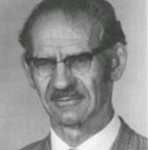 Reginald Harry (“Reg”) Clarke (1914-1990) had a long and distinguished career in meteorology, at the Bureau of Meteorology, CSIRO, and the University of Melbourne. He was Chairman of the Australian Branch of the Royal Meteorological Society (the predecessor of AMOS) 1976-80.
Reginald Harry (“Reg”) Clarke (1914-1990) had a long and distinguished career in meteorology, at the Bureau of Meteorology, CSIRO, and the University of Melbourne. He was Chairman of the Australian Branch of the Royal Meteorological Society (the predecessor of AMOS) 1976-80.
Reg was born into a farming family in the mid-north of South Australia. He was awarded Arts and Science degrees by Adelaide University then taught at Quorn High School before joining the Royal Australian Air Force’s Meteorology Branch. After the end of the War, he was Officer-in-Charge of the Canberra Meteorological Office for the Bureau of Meteorology, before moving to the Bureau’s Central Office in Melbourne. Reg joined the CSIRO Division of Atmospheric Physics in Aspendale in 1957. He was Officer-in-Charge of the Australian Numerical Meteorology Research Centre (ANMRC) from 1974 until his retirement in 1978. After his retirement from government service, he continued research at the University of Melbourne, for many years.
Reg undertook comprehensive and innovative studies of many weather phenomena including sea breezes, summer cool changes, cold fronts, and roll clouds such as the Morning Glory of the Gulf of Carpentaria. His experience as an operational meteorologist, along with his deep physical understanding and research experience, allowed him to combine physical understanding, synoptic analysis, and field experimentation to improve the understanding of these phenomena. He mounted two field experiments that are regarded as amongst the best ever sources of data on the boundary layer, Wangara in 1967 and Koorin in 1974. He spent some of 1965 and 1966 at the USA Geophysical Fluid Dynamics Laboratory where he undertook work with primitive equation models, especially for the Southern Hemisphere.
More details of Reg’s many contributions to Australian meteorology are available in an obituary published in the Australian Meteorological Magazine, volume 38, 1990, pages 223-225. A list of his publications was compiled by Dr Dale Hess and published in the Australian Meteorological Magazine, volume 29, 1991, pages 147-8. A special issue (volume 41) of the Australian Meteorological Magazine was published in 1992 in honour of Reg’s life and work. Included in that special issue is an article by Professor Bruce Morton entitled “Reg Clarke: life and work”.
In Reg’s memory, AMOS each year invites a distinguished speaker to present a review lecture on a topic in meteorology or an associated field, at the Annual Conference of the Society.
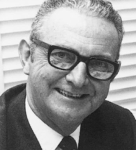 WJ (Bill) Gibbs OBE (1916-2005), was Commonwealth Director of Meteorology from 1962 to 1978 and First Vice-president of the World Meteorological Organization (WMO) from 1967 to 1975. His initiatives while Director transformed Australian operational meteorology. As John Zillman has pointed out[1][2] “More than any other, he shaped the Bureau of Meteorology of the twentieth century”. He convinced governments of the day of the value of increasing resourcing of meteorology and during his time the staff of the Bureau doubled to just under 2000. He played a key role in the Bureau acquiring powerful computers in the late 1960s, to introduce operational numerical weather prediction into forecasting. Bill fought for the bilateral arrangement with Japan that has provided Australian access to the invaluable Japanese geostationary satellite data. With Dr CHB Priestley, Gibbs championed the establishment of the Cape Grim Baseline Air Pollution Station. He developed the use of deciles as drought indicators, an approach still used in climate monitoring operations here and overseas.
WJ (Bill) Gibbs OBE (1916-2005), was Commonwealth Director of Meteorology from 1962 to 1978 and First Vice-president of the World Meteorological Organization (WMO) from 1967 to 1975. His initiatives while Director transformed Australian operational meteorology. As John Zillman has pointed out[1][2] “More than any other, he shaped the Bureau of Meteorology of the twentieth century”. He convinced governments of the day of the value of increasing resourcing of meteorology and during his time the staff of the Bureau doubled to just under 2000. He played a key role in the Bureau acquiring powerful computers in the late 1960s, to introduce operational numerical weather prediction into forecasting. Bill fought for the bilateral arrangement with Japan that has provided Australian access to the invaluable Japanese geostationary satellite data. With Dr CHB Priestley, Gibbs championed the establishment of the Cape Grim Baseline Air Pollution Station. He developed the use of deciles as drought indicators, an approach still used in climate monitoring operations here and overseas.
Internationally, Bill played a key role in the establishing the World Weather Watch, and of modernising the WMO, including the early entry of China into the Organization. He chaired the WMO Executive Committee Panel of Experts on Climate Change in the mid-1970s and guided the early WMO debate that led to the establishment of the World Climate Programme. He was instrumental in establishing Melbourne as one of the three World Meteorological Centres. Bill’s early experiences in meteorology were as an officer in the RAAF Meteorological Service, from 1940, where he provided daily weather briefings to Allied Headquarters for the tropics from southeast Asia to the dateline. During this period he founded and edited the Tropical Weather Research Bulletin, to encourage and publish research into tropical meteorology (and he was a frequent scientific contributor to the Bulletin). His interest in tropical weather meant that later, as Director, he worked continuously to upgrade the Australian tropical cyclone warning system. The Bulletin subsequently evolved into the Australian Meteorological Magazine and thence into the Australian Meteorological & Oceanographic Journal and the Journal of Southern Hemisphere Earth System Science.
Bill was a strong supporter of AMOS and of its predecessor, the Australian Branch of the Royal Meteorological Society. His many achievements were honoured by the award of Officer of the Order of the British Empire (OBE) in 1968, and the prestigious IMO (International Meteorological Organization) Prize in 1982. But even more so by the “respect and affection felt by those of the generation of Bureau officers whose own lives and careers benefited so greatly from the influence and legacy of his.”
The AMOS Gibbs Medal recognises the enormous role of Bill Gibbs in influencing Australian meteorology.
[1] Zillman, J., 2005. “A fascination with the atmosphere and its ways – The life of W.J. Gibbs”, Bull. Aust. Meteorol. & Ocean. Soc., 18, 34-38.
[2] Zillman, JW, 1999. Prologue to “A very special family: Memories of the Bureau of Meteorology 1946 to 1962” by WJ Gibbs. METARCH PAPERS No 13. Bureau of Meteorology.
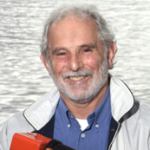 Dr Gary Albert Meyers (1941-2016) was a highly respected leader of scientists. He was instrumental in building an internationally relevant research presence in the Southern Hemisphere while helping to generate a foundation capability in tropical climate dynamics for Australia in ocean research. Gary’s primary research interests were baroclinic Rossby waves, the variability of the Indian Ocean and its relationship to the El Nino Southern Oscillation, the Indonesian throughflow, and the design of observing networks. His strong advocacy and commitment saw the establishment of key networks around Australia gifting us with 30-year records that most nations envy. As leader of CSIRO’s Oceans and Climate Program from 1997-2003 and in collaboration with the Bureau of Meteorology, he initiated development of the national model (POAMA) to predict seasonal climate in Australia. Gary’s legacy has bolstered recognition of Australia as a critical contributor to the understanding of climate processes, a deep insight into constructing the necessary observation systems that would give and give for decades to come, and a dedication to science that would reward future students of the discipline of oceanography. He was a gracious and generous mentor and science leader, and his universal kindness and sense of justice was evident in his every interaction.
Dr Gary Albert Meyers (1941-2016) was a highly respected leader of scientists. He was instrumental in building an internationally relevant research presence in the Southern Hemisphere while helping to generate a foundation capability in tropical climate dynamics for Australia in ocean research. Gary’s primary research interests were baroclinic Rossby waves, the variability of the Indian Ocean and its relationship to the El Nino Southern Oscillation, the Indonesian throughflow, and the design of observing networks. His strong advocacy and commitment saw the establishment of key networks around Australia gifting us with 30-year records that most nations envy. As leader of CSIRO’s Oceans and Climate Program from 1997-2003 and in collaboration with the Bureau of Meteorology, he initiated development of the national model (POAMA) to predict seasonal climate in Australia. Gary’s legacy has bolstered recognition of Australia as a critical contributor to the understanding of climate processes, a deep insight into constructing the necessary observation systems that would give and give for decades to come, and a dedication to science that would reward future students of the discipline of oceanography. He was a gracious and generous mentor and science leader, and his universal kindness and sense of justice was evident in his every interaction.
The Meyers Medal commemorates the profound contributions of Dr Gary Meyers to oceanographic and climate research of the tropical Pacific and Indian Oceans, and to the establishment of key collaborative projects between Australian and international agencies.
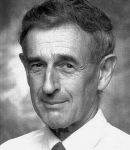 Bruce Rutherfurd Morton (1926-2012) was a professor of applied mathematics at Monash University from 1967 until his retirement in 1991, after academic appointments at University College London and Manchester University. Previously he had completed his PhD in the Department of Applied Mathematics and Theoretical Physics at St John’s College Cambridge, where he was supervised by George Batchelor and Geoffrey Taylor. Bruce’s PhD resulted in one of the most referenced papers in fluid dynamics, “Turbulent gravitational convection from maintained and instantaneous sources”. He founded a very strong group in geophysical fluid dynamics at Monash, and established an active fluid dynamics laboratory. His research covered various fluid mechanics topics, including flow from smoke stacks, the flow around bridges and aircraft, and the flow around fires. Much of his work focussed on the importance of vorticity in flows and its relevance to smoke rings, dust devils, water spouts, tornadoes and tropical cyclones, and he delighted students and colleagues with his practical demonstrations of the importance of vorticity for these phenomena in lectures and seminars.
Bruce Rutherfurd Morton (1926-2012) was a professor of applied mathematics at Monash University from 1967 until his retirement in 1991, after academic appointments at University College London and Manchester University. Previously he had completed his PhD in the Department of Applied Mathematics and Theoretical Physics at St John’s College Cambridge, where he was supervised by George Batchelor and Geoffrey Taylor. Bruce’s PhD resulted in one of the most referenced papers in fluid dynamics, “Turbulent gravitational convection from maintained and instantaneous sources”. He founded a very strong group in geophysical fluid dynamics at Monash, and established an active fluid dynamics laboratory. His research covered various fluid mechanics topics, including flow from smoke stacks, the flow around bridges and aircraft, and the flow around fires. Much of his work focussed on the importance of vorticity in flows and its relevance to smoke rings, dust devils, water spouts, tornadoes and tropical cyclones, and he delighted students and colleagues with his practical demonstrations of the importance of vorticity for these phenomena in lectures and seminars.
Bruce regarded oceanography and meteorology as important applications of fluid dynamics, and he profoundly influenced both subjects in Australia and overseas, especially through his students and his mentoring of young colleagues in these fields. Bruce was a true mentor to his students and young colleagues, taking them into his family for meals and outings, and his group would frequently take the many visitors to his group on trips to Healesville, whatever the weather. Bruce was very active in AMOS, strongly promoting the establishment of AMOS centres in each State, to ensure that our Society was a truly national organisation.
In recognition of Bruce’s contribution to geophysical fluid dynamics, his mentoring of a generation of atmospheric scientists and oceanographers, and his strong support and influence on the development of AMOS into a vibrant and national scientific society, AMOS renamed the AMOS Medal as the Morton Medal.
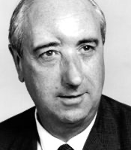 Charles Henry Brian (Bill) Priestley (1915-1998) was a researcher of the highest order, as well as being a dominant influence on the organisation of meteorological research in Australia, and a motivating force for research by others, during his lifetime and his influence continues to be important. He has the rare distinction of having a constant named after him (the Priestley Constant in free convection) and a law or ratio (the Priestley-Taylor ratio for evaporation in well-watered landscapes). His research, and his contributions to the organisation and management of atmospheric research in Australia, was recognised by a lengthy list of awards including the Symons Memorial Gold Medal of the Royal Meteorological Society (1967), the IMO Prize of the World Meteorological Organization (1973), the Rossby Research medal of the American Meteorological Society (1974), and the Flinders Medal of the Australian Academy of Science (1976). He was also an elected Fellow of the Australian Academy of Science (1955) and the Royal Society of London (1966) and was made an Officer of the Order of Australia in 1976. In the 1960s, he played a key role in the development of the new international meteorological research programs, serving first as a member of the WMO Advisory Committee and then as an inaugural member of the Joint Organizing Committee for the Global Atmospheric Research Programme (GARP). He chaired many important national committees including the Australian Academy of Science committee which prepared the Academy’s 1976 landmark report on climate change.
Charles Henry Brian (Bill) Priestley (1915-1998) was a researcher of the highest order, as well as being a dominant influence on the organisation of meteorological research in Australia, and a motivating force for research by others, during his lifetime and his influence continues to be important. He has the rare distinction of having a constant named after him (the Priestley Constant in free convection) and a law or ratio (the Priestley-Taylor ratio for evaporation in well-watered landscapes). His research, and his contributions to the organisation and management of atmospheric research in Australia, was recognised by a lengthy list of awards including the Symons Memorial Gold Medal of the Royal Meteorological Society (1967), the IMO Prize of the World Meteorological Organization (1973), the Rossby Research medal of the American Meteorological Society (1974), and the Flinders Medal of the Australian Academy of Science (1976). He was also an elected Fellow of the Australian Academy of Science (1955) and the Royal Society of London (1966) and was made an Officer of the Order of Australia in 1976. In the 1960s, he played a key role in the development of the new international meteorological research programs, serving first as a member of the WMO Advisory Committee and then as an inaugural member of the Joint Organizing Committee for the Global Atmospheric Research Programme (GARP). He chaired many important national committees including the Australian Academy of Science committee which prepared the Academy’s 1976 landmark report on climate change.
After graduating from Cambridge with a double first, Bill joined the Meteorological Office in 1939, participating in micrometeorological research and experiments on the spread of gases, before collaborating in the development of techniques to use thickness patterns to produce upper-air charts, and participating in the weather forecast for D-Day. In 1946 he was recruited to lead the CSIRO Section of Meteorological Physics. At CSIRO he conducted research on large-scale atmospheric dynamics (especially focussing on fluxes of heat, water vapour and angular momentum), and, with WC Swinbank, on small-scale heat transfer and convection (especially on vertical transfer of heat, momentum and mass). He also worked on the water cycle, focussing on evaporation over land. In 2013, 15 years after his death, Bill’s peer-reviewed publications were still cited more than 200 times.
In 1955 Bill became the first Chief of the renamed CSIRO Division of Meteorological Physics. In 1973 this was again renamed, to the Division of Atmospheric Physics, to reflect a broadening of its research to cover a wider range of atmospheric physical processes, including the monitoring and understanding of changes in atmospheric constituents. He was, with WJ Gibbs, the Director of Meteorology, instrumental in establishing a joint research centre, the Commonwealth Meteorology Research Centre (CMRC) to enhance Australian research into numerical weather prediction and climate modelling. After retiring as Chief of the Division of Meteorological Physics, Bill served as Chairman of CSIRO’s Environmental Physics Research Laboratories (EPRL) from 1973 to 1977 and then took up the position of part-time Professor of Mathematics at Monash University for a number of years. He withdrew from active involvement in the Australian meteorological community in the late 1980s.
Bill’s influence on facilitating and encouraging high-quality Australian research over a very long period can perhaps be demonstrated best by recalling the names of just some of the scientists recruited to CSIRO in his time, including Graeme Pearman, John Garratt, Sandy Troup, Arch Dyer, Garth Paltridge, Martin Platt, Reg Clarke, Barrie Pittock, Andrzej Berson, Bill Swinbank, Len Deacon, Angus McEwan, Eric Webb, Ian McIlroy and Kevin Spillane. Many of these, recruited as young scientists, went on to become familiar names, not just to other researchers, but also to politicians, the media and the public, attesting to the encouragement and organisational abilities that Bill displayed throughout his career. He passed away in 1998.
The Priestley Medal commemorates the life-long contributions of Dr C H B Priestley to meteorological and oceanographic research.
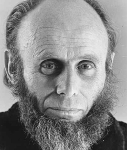 Dr Uwe Radok was one of Australia’s pioneers in meteorological and glaciological research. Becoming Head of the Department of Meteorology at the University of Melbourne in 1960, he played a leading role in the development of Australian Antarctic meteorology and glaciology. A meltwater lake in the Prince Charles Mountains in Antarctica has been named the Radok Lake after him.
Dr Uwe Radok was one of Australia’s pioneers in meteorological and glaciological research. Becoming Head of the Department of Meteorology at the University of Melbourne in 1960, he played a leading role in the development of Australian Antarctic meteorology and glaciology. A meltwater lake in the Prince Charles Mountains in Antarctica has been named the Radok Lake after him.
In appreciation of Uwe Radok’s achievements, AMOS makes an annual award for the best PhD thesis for the previous year in the fields of meteorology, oceanography, glaciology or climatology awarded in Australia.
Uwe Radok grew up and did his university studies in Germany in the early 1930s but fled to England as Nazism took hold. He worked as an engineering draftsman in the UK but was interned in the early years of the War and then shipped to Australia where he was subject to a further period of internment before being released to join the Australian army in 1942. At the end of the War, he joined the University of Melbourne where he completed his PhD under Dr Fritz Loewe (as Loewe’s only doctoral student) and became known to his many subsequent students as ‘The Doc’. He took over as “Reader in Charge” of the Meteorology Department on Loewe’s retirement in 1960.
During the 1960s and 1970s Dr Radok conducted and led a wide-ranging research program and served as thesis supervisor and mentor for a host of Bureau of Meteorology, CSIRO and other researchers, many of who became the leading figures of Australian meteorology in the 1980s and 1990s. By 1980, the Meteorology Department under the leadership of Drs Loewe and Radok had produced 45 Masters Graduates, 15 PhDs and two DScs.
Dr Radok established research links with the Bureau of Meteorology, CSIRO and other government agencies. He built up an internationally respected research program in Antarctic glaciology. With Alison Grant he undertook early studies of aerological data over Australia. With Dick Jenssen and Ross Maine, he pioneered numerical weather prediction in Australia. And with Dr Kevin Spillane and Professor Elmar Reiter of Colorado State University, he made globally important discoveries on the mechanisms of clear air turbulence. He spent the last working decade of his highly productive meteorological career in the United States, in Boulder, Colorado. Uwe and his wife Anita eventually returned to Australia to retire on the NSW north coast. Uwe Radok died on August 28, 2009 aged 93. His ashes were scattered into the sea from the trawl deck of the Aurora Australis alongside an iceberg northeast of Davis Station, Antarctica on 20 March 2010.
The Uwe Radok Award recognises Dr Radok’s significant contribution to training graduate students.
Christopher Taylor was a Bureau of Meteorology analyst and forecaster from the mid-70s until his untimely death at age 35 in July 1988. He had a natural curiosity in, and an enthusiasm and energy for investigating observed weather phenomena and operational forecasting problems, which was largely carried out in his own time.
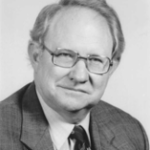 John William Zillman (1939-) was born in Brisbane in 1939. He joined the Australian Bureau of Meteorology in 1957 and served in operational, research, and management roles in Brisbane, Sydney and Melbourne, retiring from the Public Service and from the Bureau in 2005. He was the Bureau’s Assistant Director Research from 1974-1978. He served as Director of Meteorology from 1978 to 2003. He is now an honorary senior adviser at the Bureau.
John William Zillman (1939-) was born in Brisbane in 1939. He joined the Australian Bureau of Meteorology in 1957 and served in operational, research, and management roles in Brisbane, Sydney and Melbourne, retiring from the Public Service and from the Bureau in 2005. He was the Bureau’s Assistant Director Research from 1974-1978. He served as Director of Meteorology from 1978 to 2003. He is now an honorary senior adviser at the Bureau.
John chaired the Australian Branch of the Royal Meteorological Society (1977-78) and the Victorian Divisions of ANZAAS (1983-84) and the Australian Institute of Physics (1985-86). He was President of the Royal Society of Victoria (1993-94). He was elected to Fellowship of the Australian Academy of Technological Sciences and Engineering (ATSE) in 1980 and (by special election) to Fellowship of the Australian Academy of Science (AAS) in 2006. He served as Honorary Secretary (1990-1994), Vice President (1995-98) and President (2003-06) of ATSE and President (2005-06) of the Australian National Academies Forum (NAF). John led Academy and joint Academies initiatives on natural disasters, climate change, oceans, space science and Earth observation.
John Zillman has been deeply involved in international meteorology and other international scientific activities. From 1974 to 1978, he coordinated preparations for Australian participation in the 1979 Global Weather Experiment. He was Permanent Representative of Australia with the World Meteorological Organization (WMO) from 1978 to 2004 and was an elected member of the WMO Executive Council from 1979 to 2004. He was First Vice President of WMO from 1987 to 1995 and President of WMO from 1995 to 2003. He served on Australian delegations to the Rio Earth Summit in 1992, the Assembly and Executive Council of the Intergovernmental Oceanographic Commission (IOC) from 1990 to 1999 and the General Conference of UNESCO from 1999 to 2007. He led Australia delegations to seven quadrennial World Meteorological Congresses (1979-2003), the 1993 Intergovernmental Meeting on the World Climate Programme, the 1999 Budapest World Conference on Science and the 2003, 2004 and 2005 Ministerial Earth Observation Summits. He was Principal Delegate of Australia to the Intergovernmental Panel on Climate Change (IPCC) and Southwest Pacific member of the IPCC Bureau from 1994 to 2004. He chaired the international Steering Committee for the Global Climate Observing System (GCOS) from 2006-09 and the International Organising Committee for the 2009 World Climate Conference-3. He received the WMO’s 50th IMO (International Meteorological Organization) Prize in 2005.
Dr Zillman has published more than 200 scientific and policy papers and delivered approximately 1000 major scientific presentations, speeches and addresses. He has served on a wide range of national committees and advisory bodies including the Australian Marine Sciences and Technologies Advisory Committee (AMSTAC) (1981-85), the Antarctic Science Advisory Committee (ASAC) (1985-88), the Coordinating Committee on Science and Technology (CCST) (1989-2003), the Australian Space Council (1993-96), the National Commission for UNESCO (2002-08) and the Prime Minister’s Science, Engineering and Innovation Council (PMSEIC) (2003-06) as well as on the Standing Committees of Commonwealth-State Ministerial Councils for Primary Industries, Environment and Water Resources.
The Zillman Medal is named in honour of the distinguished contributions of Dr John Zillman AO FAA FTSE to Australian and international meteorology and science.
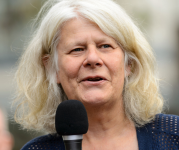 Dr Penny Whetton (1958-2019) was one of Australia’s leading climate scientists. She had a distinguished twenty-five year career at CSIRO as an international leader in the science of regional climate change projections. She was a Group Leader and Program Leader for much of her career, and she managed many large collaborative projects with colleagues in CSIRO and the Bureau of Meteorology.
Dr Penny Whetton (1958-2019) was one of Australia’s leading climate scientists. She had a distinguished twenty-five year career at CSIRO as an international leader in the science of regional climate change projections. She was a Group Leader and Program Leader for much of her career, and she managed many large collaborative projects with colleagues in CSIRO and the Bureau of Meteorology.
She was also a talented and creative landscape painter, photographer, and furniture maker, and had a prodigious interest in and knowledge of history and the natural world.
Penny affirmed her gender in 2003, and was a champion of the transgender community.
Penny’s work was recognised internationally, and she was a Lead Author in three IPCC Assessment Reports. As a Lead Author in the IPCC Fourth Assessment, Penny received a certificate of appreciation for her role when the IPCC shared in the joint award of the 2007 Nobel Peace Prize to the IPCC and Al Gore. The CSIRO Climate Impacts Group that she led was awarded the 2003 Eureka Prize for Environmental Research.
Penny led the development of national climate change projections for Australia in 1992, 1996, 2001, 2007 and 2015. The 2015 projections remain the most comprehensive ever developed for Australia. They are widely used by the private sector, governments and NGOs and were one of Penny’s proudest achievements.
Penny’s research contributions initially focused on climate variability and circulation variations associated with El Niño and links to rainfall and streamflow variations in Australia and regions around the Pacific rim, including China and the US, as well as effects on flow in the Nile. After moving to CSIRO, her research focused more on climate change projections and impacts.
In 2014, Penny became an honorary research fellow at CSIRO and the University of Melbourne, where she continued to be involved in climate research, advisory panels and consulting work. In 2017, she was appointed by the Andrews Government in Victoria as a member of an expert independent panel to guide how Victoria can most effectively reduce its emissions.
The Penny Whetton Memorial Lecture, given at the AMOS Annual Conference, recognises the achievements and impacts of Dr Penny Whetton in climate change science and as a role model for gender diversity.
